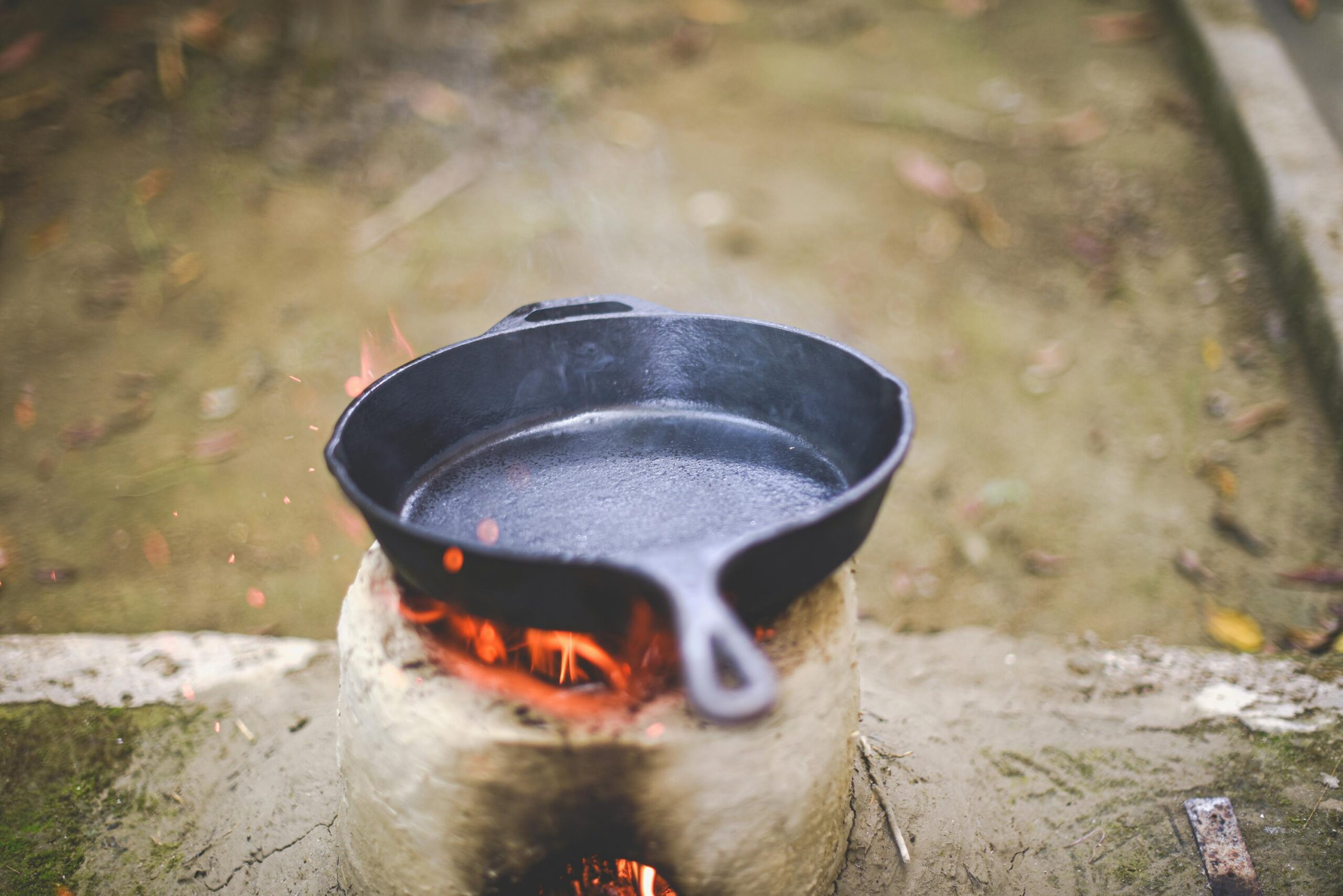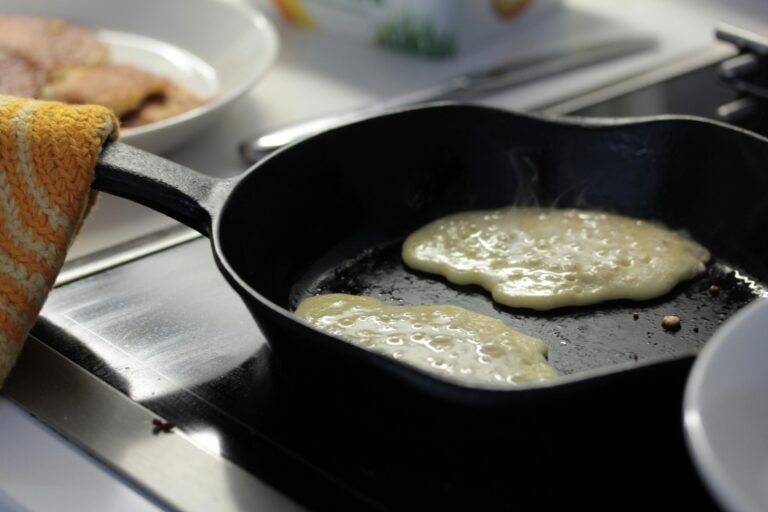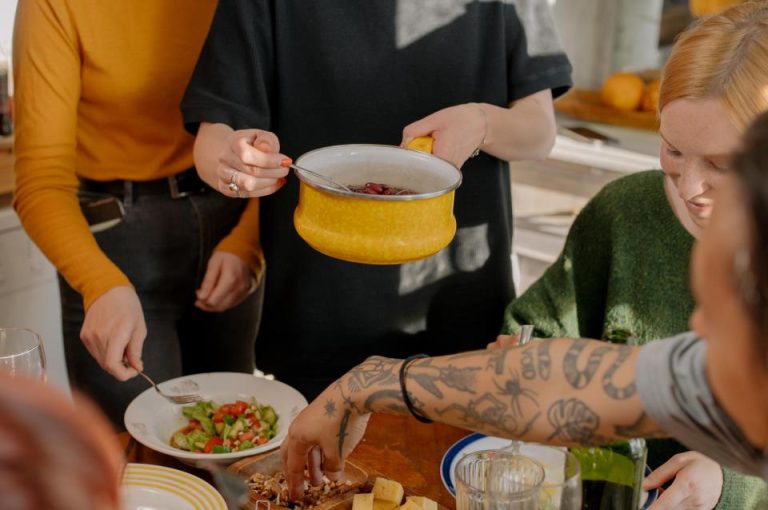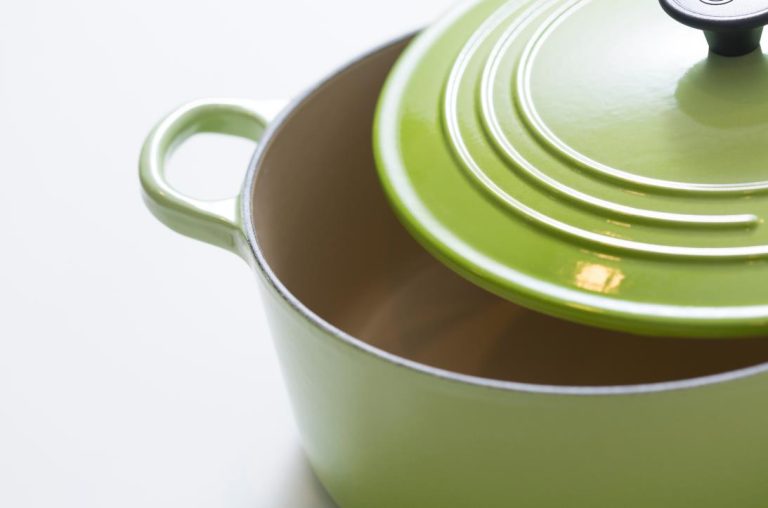Imagine this: You’re ready to make your go-to breakfast—crispy hash browns in the cast iron pan you’ve spent 6 months seasoning. It’s the only pan that cooks evenly, never sticks, and feels like a part of your kitchen routine. But when you pull it out, your heart drops: Orange-brown rust is spread across the surface.
You freeze, wondering:
- Did I ruin the seasoning? All that time rubbing oil and baking it—gone?
- Do I have to buy a new one? Cast iron isn’t cheap, and starting over with seasoning sounds exhausting.
- Will scrubbing make it worse? If you use steel wool, you might scratch the pan; if you skip cleaning, the rust will spread.
Here’s the good news: Rust on cast iron is fixable—and you don’t need fancy tools or toxic chemicals. The bad news? Most people use the wrong method, making the problem worse. Below, we break down 4 targeted solutions for every rust level (from tiny spots to thick flakes) with step-by-step guides, zero scratching, and results fast. Plus, we’ll show you how to get your non-stick seasoning back—and keep rust from coming back ever again.
Why Do Cast Iron Pans Rust?
Cast iron is prone to rusting because it contains iron, which reacts with oxygen and water. The protective seasoning (a layer of polymerized oil) on the pan can be damaged by improper cleaning methods like soaking, using the dishwasher, or not drying the pan thoroughly after washing. Even a well – seasoned pan can rust if exposed to these conditions.
Buy Wholesale Cookware and Start Scaling up with Us Today
Contact us and connect with a sales rep to get a free quote.
How to Clean Rusty Cast Iron Pan
Method 1: For Light Rust (5-Min Fix) – Salt + Potato
When to use this: Small, surface-level rust spots (e.g., from leaving a wet sponge on the pan overnight, or a few drops of water you forgot to wipe). This method is gentle enough to keep your existing seasoning intact—no stripping required.
What you’ll need:
- ¼ cup coarse sea salt (or kosher salt—not table salt, which is too fine to lift rust)
- 1 raw potato (halved crosswise; the starch softens rust without scratching)
- Paper towels (for wiping away rust and salt)
Step-by-step:
- Prep the pan: Make sure the pan is dry (if it’s wet, pat it with a towel first—moisture will make salt clump). Sprinkle the coarse salt evenly over the rusty spots—you want a thin, even layer that covers every orange area.
- Scrub with the potato: Hold the potato half by its skin (for grip) and press the cut side firmly into the salt. Scrub in small, circular motions over the rust—you’ll start to see the orange color lift onto the potato. Keep going until the rust is gone (this takes 1–2 minutes per spot).
- Wipe clean: Use a paper towel to brush away the salt and rust residue. Check for any remaining spots—if you see faint orange, repeat the scrub with a little more salt.
- Dry immediately: Wipe the pan one more time with a clean paper towel to remove all salt. Then, set it on the stovetop over low heat for 1–2 minutes—this evaporates any hidden moisture (the #1 cause of more rust).
Pro tip: If you don’t have a potato, a dry paper towel works too—just scrub the salt gently. The potato is better for softening tough spots, but paper towels work in a pinch.
Buy Wholesale Cookware and Start Scaling up with Us Today
Contact us and connect with a sales rep to get a free quote.
Method 2: For Moderate Rust (15–30 Min) – White Vinegar + Water Soak
When to use this: Rust that’s spread beyond small spots—think a thin layer covering half the pan, or rust that won’t come off with salt alone (e.g., from leaving the pan in the sink for a day). Vinegar’s acidity softens rust, but it’s mild enough to avoid damaging the pan’s metal.
What you’ll need:
- White vinegar (distilled works best—no need for expensive brands)
- Water (tap water is fine)
- A large bowl or sink (big enough to submerge the rusty part of the pan)
- A soft-bristle brush (like a dish brush with plastic bristles—not metal)
- Clean towel (for drying)
Step-by-step:
- Mix the solution: In the bowl or sink, stir equal parts vinegar and water (e.g., 1 cup vinegar + 1 cup water). You only need enough to cover the rusty area—no need to submerge the entire pan (especially if it has a wooden handle, which vinegar can damage).
- Soak the pan: Place the pan in the solution, rusty side down. Set a timer for 15 minutes—do not soak longer than 30 minutes! Vinegar is acidic, and over-soaking will etch tiny holes in the metal (making it more prone to rust later).
- Scrub gently: After 15 minutes, take the pan out and use the soft-bristle brush to scrub the rusty areas. The rust should lift easily—if it’s still stuck, soak for 5 more minutes (but no longer).
- Rinse and dry thoroughly: Rinse the pan under warm water to remove all vinegar residue (vinegar left on the pan will speed up rust). Pat it dry with a towel, then set it on the stovetop over low heat for 2 minutes to eliminate any leftover moisture.
Pro tip: If your pan has a wooden handle, wrap it in plastic wrap before soaking—this keeps vinegar from warping or discoloring the wood.
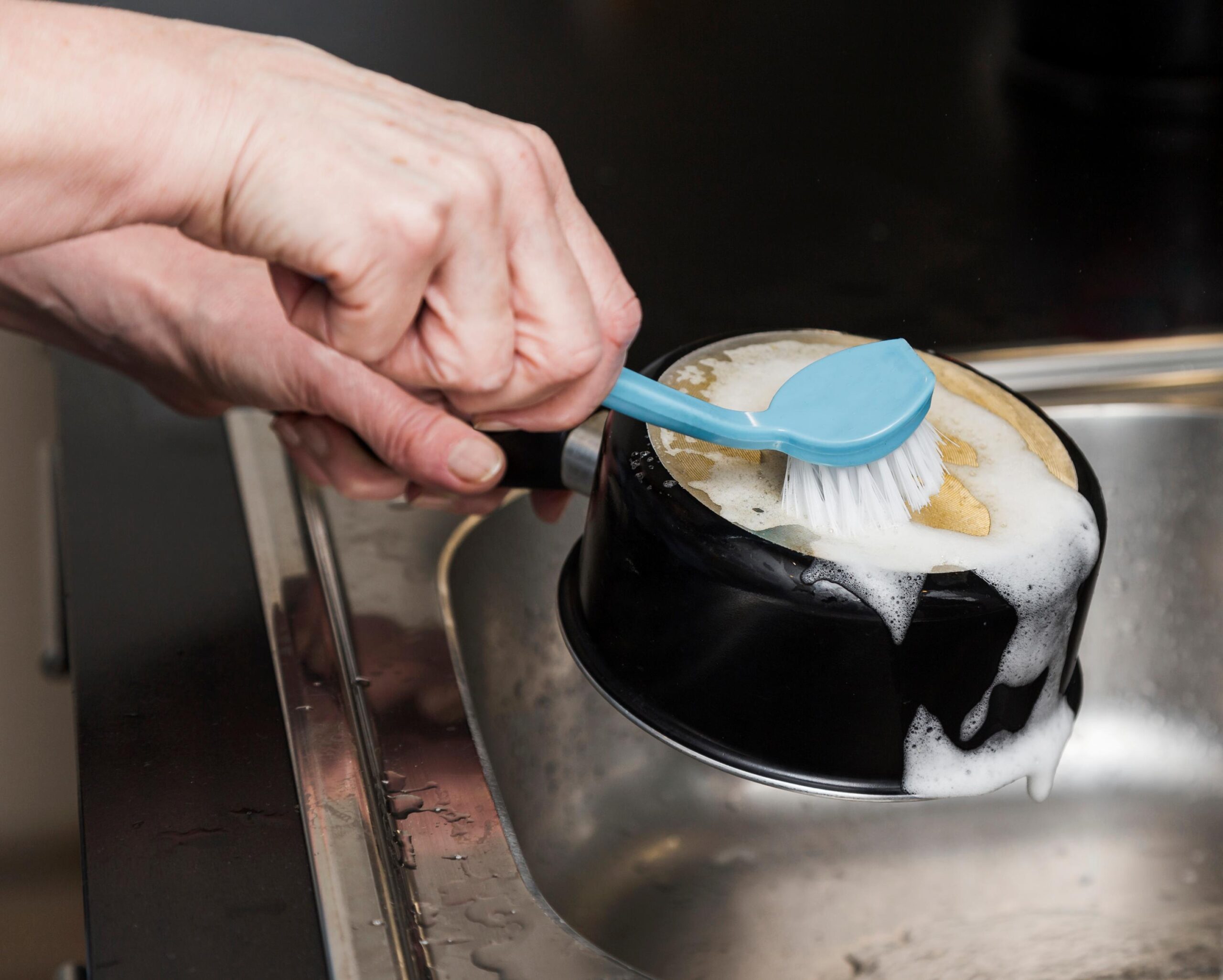
Method 3: For Severe Rust (30 Min) – Baking Soda + Fine Steel Wool
When to use this: Thick, flaky rust (e.g., a pan that’s been stored in a damp garage for months, or rust that’s covering the entire surface). This method uses baking soda to break down tough rust and extra-soft steel wool to lift it—no deep scratches.
What you’ll need:
- 2 tbsp baking soda (arm & hammer works—it’s abrasive but gentle)
- 1 tbsp hot water (to make a paste)
- 0000-grade steel wool (the softest kind—never use 000 or coarser, which will scratch the pan)
- Clean towel
- Oil (for re-seasoning later—we’ll cover this next)
Step-by-step:
- Make the rust-fighting paste: In a small bowl, mix baking soda and hot water until you get a thick paste (it should stick to a spoon without dripping). If it’s too runny, add more baking soda; if it’s too dry, add a drop more water.
- Cover the rust: Spread the paste evenly over all thick, flaky rust. Let it sit for 10 minutes—this gives the baking soda time to dissolve the rust’s tough outer layer.
- Scrub with steel wool: Gently rub the steel wool over the paste in back-and-forth motions. Apply light pressure—you don’t need to scrub hard (the paste does the work). The rust will start to flake off onto the steel wool—keep going until all rust is gone.
- Rinse and dry: Rinse the pan under warm water to remove paste and rust. Dry it immediately with a towel, then heat it on the stovetop for 2 minutes (moisture = more rust—don’t skip this!).
Critical note: 0000-grade steel wool is non-negotiable here. Coarser grades (like 000 or 00) will scratch the pan’s surface, creating tiny grooves where rust can hide later. You can find 0000 steel wool at hardware stores or online for $2–$3.
Method 4: Lazy Fix (10 Min) – Chainmail Scrubber + Warm Soapy Water
When to use this: Any rust level (light to moderate) when you’re short on time. Chainmail scrubbers are designed for cast iron—they lift rust and food bits without damaging seasoning, and they’re reusable for years.
What you’ll need:
- A cast iron chainmail scrubber (affordable—$5–$10 online; look for ones with stainless steel links to avoid rusting)
- Warm water
- 1 drop of mild dish soap (e.g., Dawn—modern dish soap won’t ruin seasoning, contrary to old myths)
- Clean towel
Step-by-step:
- Wet the pan and scrubber: Fill the cast iron pan with warm water and add 1 drop of dish soap. Wet the chainmail scrubber under the faucet.
- Scrub the rust: Use the scrubber to rub the rusty areas in circular motions. The links will lift rust without scratching—you’ll see results in 1–2 minutes. For thicker rust, let the soapy water sit for 5 minutes first.
- Rinse and dry: Pour out the soapy water and rinse the pan under warm water. Dry it with a towel, then heat it on the stovetop for 1 minute to remove moisture.
- Clean the scrubber: Rinse the chainmail under water and let it air dry—this keeps the scrubber from rusting.
Pro tip: Keep a chainmail scrubber next to your sink—its fast, easy, and eliminates the need for salt, vinegar, or potatoes. It’s also great for cleaning stuck-on food (like burnt eggs) without ruining seasoning.
Buy Wholesale Cookware and Start Scaling up with Us Today
Contact us and connect with a sales rep to get a free quote.
Re – Seasoning the Pan After Cleaning
After cleaning the rust, it’s essential to re – season the pan to create a new protective layer.
- Apply a Thin Layer of Oil: Use a cloth or lint – free paper towel to apply a very thin layer of cooking oil (such as vegetable oil or canola oil) to the entire surface of the pan, including the outside and the handle. The oil should be so thin that it doesn’t drip when you tilt the pan.
- Bake in the Oven: Preheat your oven to 450 – 500°F (232 – 260°C). Place a sheet of aluminum foil on the bottom rack to catch any drips. Put the oiled pan upside down on the middle rack of the oven and bake for 1 hour.
- Cool in the Oven: Turn off the oven and let the pan cool inside. This allows the oil to polymerize and form a durable seasoning.
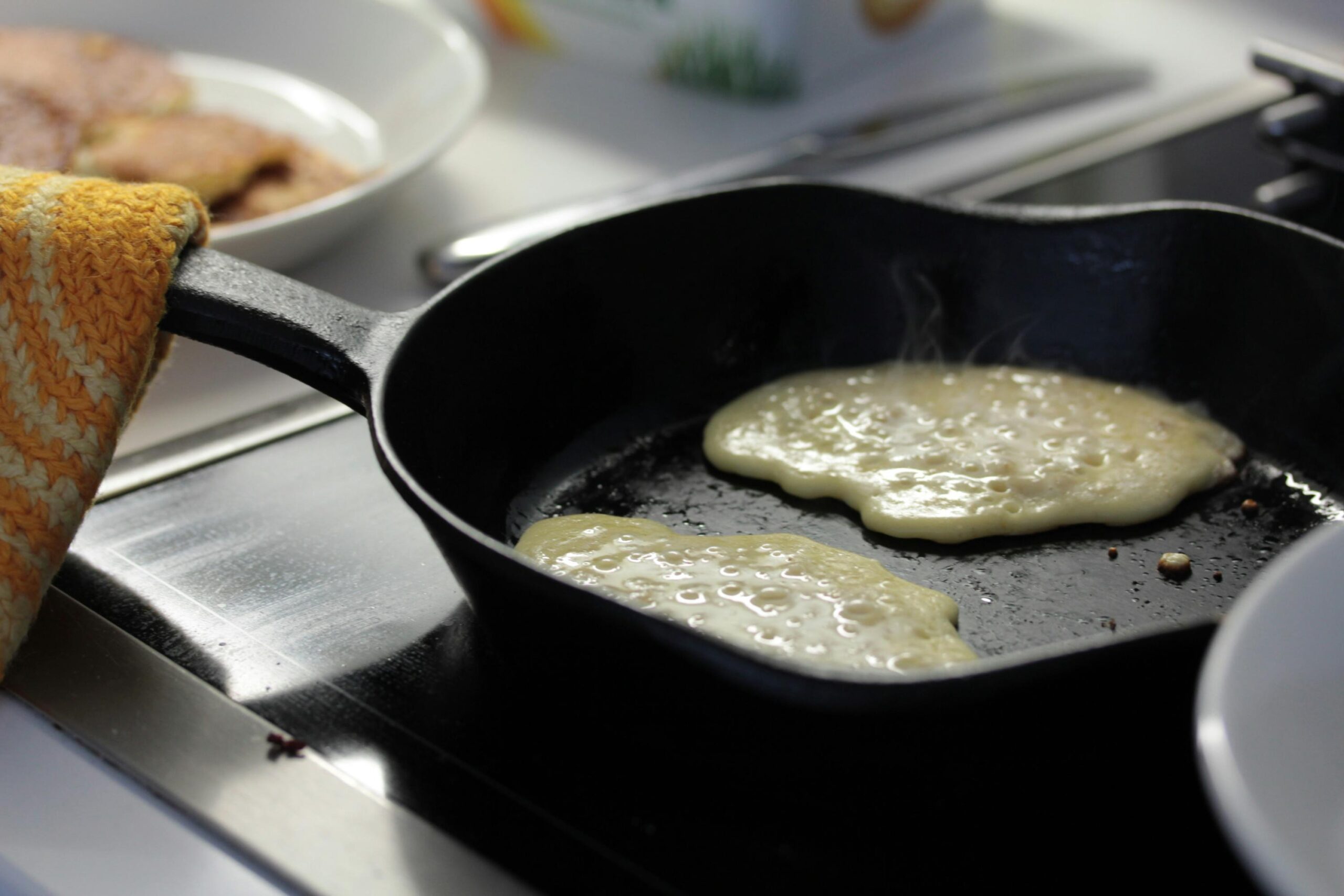
Preventing Rust in the Future
- Re – season Regularly: Every few months, depending on use, re – season your cast iron pan to maintain the protective layer.
- Avoid Acidic Foods: Cooking highly acidic foods like tomatoes or citrus fruits in an unseasoned or poorly seasoned cast iron pan can damage the seasoning.
- Never Use the Dishwasher: The harsh environment of the dishwasher can strip the seasoning and cause rust.
- Dry Thoroughly: Always dry your cast iron pan completely after washing, either with a towel or by heating it on the stovetop.
- Use Frequently: Regular use of the pan helps build up and maintain the seasoning.
Buy Wholesale Cookware and Start Scaling up with Us Today
Contact us and connect with a sales rep to get a free quote.
Final Thoughts: Start with Quality Cast Iron (and Trusted Partners)
Cleaning a rusty cast iron pan is manageable, but investing in a high-quality pan from the start reduces rust risk and ensures long-lasting performance. At Leeknives, we specialize in premium cookware—including durable cast iron pans and sharp, reliable knives—designed for home cooks and businesses alike.
Whether you’re a retailer looking to stock top-tier cast iron cookware, a restaurant in need of bulk kitchen tools, or a brand seeking custom solutions, we’ve got you covered. We offer OEM services to create cookware tailored to your brand’s specs, plus Wholesale options to fit your business volume. Our cast iron pans are crafted for even heating and easy maintenance—so your customers (or team) spend less time fixing rust and more time cooking.
Ready to elevate your cookware lineup? Reach out to Leeknives today to learn more about our OEM and Wholesale services for cast iron pans and knives.
Frequently Asked Questions
Is cast iron ruined if rusted?
No—cast iron is not ruined by rust! Unlike fragile cookware, cast iron’s durable metal can withstand rust removal and restoration. Rust only affects the surface (and any existing seasoning), not the pan’s structural integrity. As long as you follow the steps above—removing rust with steel wool/baking soda, drying thoroughly, and re-seasoning—your cast iron pan will regain its non-stick properties and last for decades. High-quality cast iron (like the pans we craft at Leeknives) is especially resilient, making rust repair even simpler.
Is a little bit of rust on cast iron ok?
A little bit of rust on cast iron isn’t immediately dangerous—small, surface-level flecks won’t harm you or ruin the pan’s structure—but it’s not wise to ignore. Even minor rust means the pan’s protective seasoning is damaged there, and the rust will spread over time (especially with moisture), hurting its non-stick performance. Fix it fast: wipe the spot with a damp towel, gently scrub with fine steel wool, dry thoroughly (even heat it briefly), then rub a tiny bit of oil on the area. With durable Leeknives cast iron pans, this quick touch-up keeps them in great shape for ages.
Should I throw away a rusty cast iron pan?
Almost never! Even 50-year-old pans with severe rust can be restored. Use the baking soda + 0000 steel wool method, then re-season twice (instead of once). Cast iron is one of the most durable cookware materials—give it a second chance.
